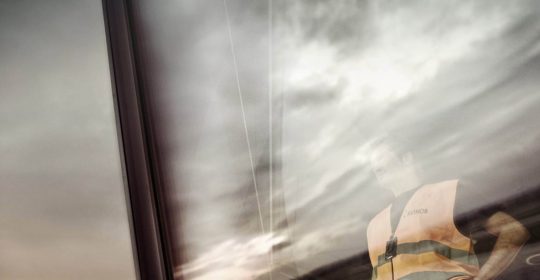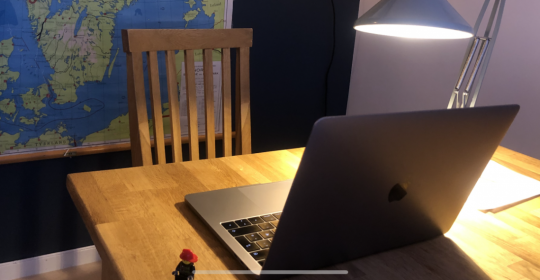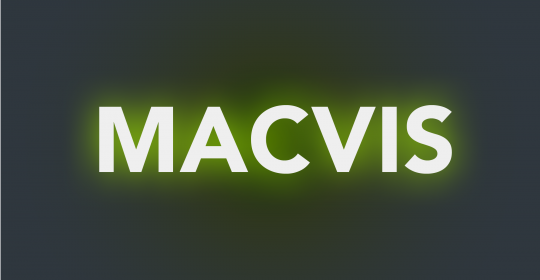How to Host a Successful Digital Conference
Published: 26th May 2020By: Lasse Hamre
The digital world gives us the opportunity to reach more people, as time and distance is now no obstacle. But it’s important to note that successful digital and physical conferences have different qualities. Here you will find our advice on how you can create an engaging and interesting digital conference experience.
Why do we go to conferences? In my case, I go to get professional input and inspiration provided by exciting leaders, to participate in professional discussions, and to develop my network.
When planning a digital conference, we want to maintain as many of these qualities as possible. However, it’s not as simple as just setting up a camera and doing the same thing online as we would if everyone was physically assembled. Any of you who have spent any time in digital meetings lately know that it can become tiring quickly. Fortunately, today’s technology allows for a few interesting opportunities that you can use to your advantage.
Our advice is based on our expertise in digital learning and our most recent experience conducting HR-Norway’s online conferences, where we used the technology CK Blend from CrossKnowledge as the conference platform.
Produce high quality content – in advance
Audiences have become visually discerning. Webinars and Skype meetings are now commonplace. To create an engaging experience, you want to give your conference participants a break from everyday life. Therefore, you need to raise the level of the conference’s visual presentations. The slides should be shorter and more to-the-point than they would have been on the conference stage. Focus on strong storytelling and put extra energy into image use. Think of other visual media, like TV and movies. A strong visual experience with well-paced slides presented with excitement can replace the energy that would otherwise be felt in a bustling conference hall.
Create a live feeling
Pre-produced material gives the conference organiser control and confidence. When participants enter the conference at the predetermined start time, they can experience a vital and vibrant feeling that is worthy of a festival if you present them with a mix of video presentations, participant interaction and live sessions. Everything can be recorded while it is happening, so that late comers can log in afterwards and experience the conference at their own pace.
Provide options
A classic conference often consists of a combination of keynote presentations and parallel sessions. The physical location can limit the possibilities. Lucky for us, architectural constraints don’t exist on the internet. On the internet, we also don’t have the patience to sit through mediocre lectures. If the conference doesn’t immediately offer something we find interesting, the motivation to read email, check the news or water the plants will soon prevail. Rather, think of your conference as a variety of activities participants can shop between. You can mix videos, webinars, e-learning, chat, questions and comments, polls, quizzes and competitions. Facilitate the participants’ interest and let them click around and explore the content as they please.
Let the participants get involved
Research shows that learning outcomes increase significantly when people can participate by commenting, liking and sharing, as compared to passively watching a video or a webinar.
In a webinar with chat, the engagement takes place synchronously: those who are present get to see what’s going on. But engagement can also take place asynchronously. Facebook is an example of that, where you can return to exciting groups at regular intervals and find that new discussions have arisen since you were last there. An asynchronous conference offer also provides a great option as outlined in point 3 above.
Many people are reluctant to stand up and ask a question during a keynote presentation. In fact, many are reluctant to do this online as well. So you must always be conscious of lowering the threshold for participation. If asking a question is anxiety-inducing, what might a less anxiety-inducing option be? Voting in a poll or giving a thumbs up may be a safer option for many people.
Participation and networking are a major motivator for many. Therefore, it’s ideal to facilitate extensive interaction between the participants whenever possible.
Usability, usability, usability
While the technology offers opportunities to create a good conference experience, there is also the risk of failure. Although our collective digital expertise has made quantum leaps in a short time, we must not forget that all digital tools still need time to be learned. “I can’t hear anything,” “I was thrown out,” and “I can’t log in” are all examples of messages you don’t want to deal with on the day of the conference.
Gather it all in one place. The more you can integrate everything into one tool with good usability and a low user threshold, the better. Choose safe and proven technology with an intuitive, usable interface and familiar interactions.
Use the webinar as one of several conference activities – like a treat at the end of the day
The live webinar is great for creating cohesion and the feeling of being a part of something here and now. For many, meeting their favourite speaker live online is motivating. To maintain motivation over time, you may want to offer that reward at the end. The webinar is well suited to summarise the day. Read through what the participants have produced throughout the day and encourage your lecturers to comment. It makes the conference relevant and gives participants the feeling that their contributions mattered to the overall experience.
Two things that are good to remember:
The more people that participate in the webinar, the less opportunity there is to get involved. If you want to organise a webinar where people are meant to converse with each other, you should limit the number of participants to only a dozen or so. If necessary, set up more webinars so people can spread out. Some conferences have hundreds of participants. Then the participation should take place in the chat, and the lecturer will need the help of a moderator.
Long webinars are tiring. Build in breaks and offer varied activities.
Variety!
Imagine your digital conference as a big fairground rather than a five-mile guided hike. Vary between synchronous and asynchronous elements and offer a mix of exciting activities.
Good luck with the conference. We are happy to help you make your conference a success.




